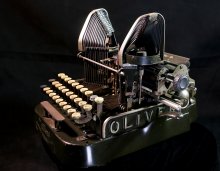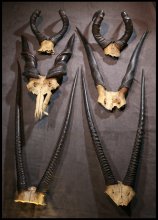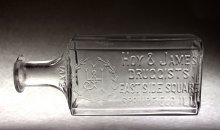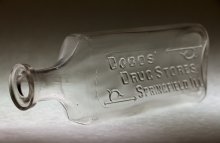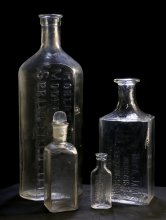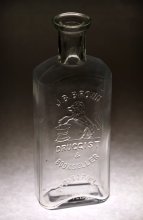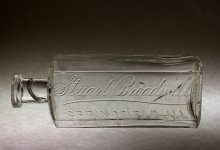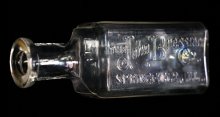Industrializing Illinois (1877-1917)
Following the Civil War, Illinois continued to grow in population, diversity, and complexity. Large-scale heavy manufacturing and a growing commercial sector joined agriculture as major employers of a rapidly growing population. Immigration continued, with African Americans from the South and southern and eastern Europeans joining more established groups. Conflicting interests sometimes led to unrest, strikes, and even violence. During this period, Illinois also became a center of exciting new movements in art, architecture, and literature.
This typewriter was produced by the Oliver Typewriter Company, which had its headquarters in Chicago and its manufacturing plant in Woodstock. Oliver was the first company to produce a “visible writer” that allowed typists to see what they were typing. On earlier typewriters, typists had to raise the platen to see what they had typed. At the company’s peak in the late 1910s, it was producing 375 machines a day.
The Kirtland’s Water Snake shares some similar habitats and habits as the Massasauga Rattlesnake and is also under scrutiny as its numbers continue to decline. It is not venomous, but it uses crayfish burrows like the Massasauga and spends most of its life underground. Biologists hoping to survey the secretive snake often will use a cover board, a corrugated sheet of aluminum that is placed over a crayfish burrow.
The Eastern Massasauga Rattlesnake is a small, venomous snake recently listed as threatened by the U.S. Fish and Wildlife Service. It persists in only a few locations in Illinois, Indiana, Iowa, Michigan, New York, Ohio, Pennsylvania, and Wisconsin. The Fish and Wildlife Service describes the Massasauga as “a small snake with a thick body, heart-shaped head and vertical pupils.”
Former president Theodore Roosevelt presented six pairs of antelope horns to the Illinois State Museum in 1910 following a year-long hunting trip to East Africa. Roosevelt’s trip was billed as an expedition to collect specimens for the Smithsonian Institution in Washington, D.C. Roosevelt was a big-game hunter, but he was also a naturalist at heart, having created his own natural history museum in his room as a child.
The pharmacy of Edward M. Hoy and Dr. A. C. James was located in Springfield at 122 South Sixth Street from 1901-1906. Medicines sold there included Dr. Rankin’s Kidney Tablets, Kodol Dyspepsia Cure, and Mystic Cure of Rheumatism and Neuralgia. The mark on the base of the bottle identifies its maker as the Western Bottle Manufacturing Company of Chicago that opened the same year as Hoy and James.
Whithall Tatum Co., of Millville, New Jersey, manufactured this bottle that may have been filled with medicines like Dr. Caldwell’s Syrup Pepsin (to cure indigestion, constipation, sick headache, or stomach trouble) or Dodds’ Cough Syrup (for coughs and colds). Both products were advertised for sale at Dodds’ Drug Store operated by Richard N. Dodds at Fifth and Monroe Streets in Springfield.
While the oval shape and reinforced lip finish of this bottle are typical for drug bottles of the time period, its large size is not. What sort of medicine was sold in this quantity is unknown. The bottle was made for Clark’s Drug Store, in Springfield, Illinois, at 213 South Sixth Street. Robert Clarkson operated the business from 1906 to 1930. A newspaper advertisement announcing the opening of Clarkson’s “New Modern Drug Store” states that “Mr. Clarkson needs no introduction,” having "previously worked as a prescription clerk at Stuart Broadwell and as a partner in Clarkson & Mitchell’s Drug Store.”
The embossed image of a lion using a mortar and pestle is noticeably subtle and is not in as stark relief as the words and images on other bottles. No one knows for sure why the lion was chosen as the symbol of Joel B. Brown’s apothecary in Springfield, Illinois.
Close inspection of a bottle produced for sale at the Stuart Broadwell Drug Store in Springfield, Illinois, shows the minor imperfections and bubbles in the handmade blown glass. Whitall, Tatum Co., of Millville, New Jersey, manufactured the bottles with the druggist’s name embossed on the side.
John Bressmer’s dry goods business remained at the same location in downtown Springfield, Illinois, for his entire 54-year career. Whitall, Tatum Co., of Millville, New Jersey, produced this embossed, blown glass bottle for Bressmer’s store.
Pages






